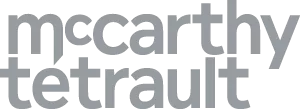- in Canada
- with readers working within the Healthcare and Law Firm industries
As the demand for environmentally sustainable products and services continues to grow, so too does the risk of greenwashing lawsuits. Yet many businesses in Canada are unsure how best to reduce this risk and protect themselves. In this article, we describe the current and potential future landscape of greenwashing claims in Canada and outline proactive steps that businesses in Canada can take to help avoid and defend them.
What is a greenwashing lawsuit?
A greenwashing (or "green sheen") lawsuit is a type of misleading advertising claim alleging that a defendant made a false or misleading representation about the environmental impacts of their business, products, or services. For example, the plaintiff might allege that a business overstated the environmental benefits of its products or services, or understated the carbon emissions associated with its products or services.
Different types of representations can be challenged. For example, a plaintiff could challenge representations about the carbon intensity of its product or service, the company's environmental commitments and sustainability objectives, or the use of terms like "eco-friendly", "natural", "green", "clean", and "climate-neutral". In some circumstances, even an omission of material information can potentially be challenged. Each case will turn on the particular language used and the surrounding context.
What anti-greenwashing laws exist?
There is no single, comprehensive "anti-greenwashing" statute in Canada. Rather, there are a patchwork of federal and provincial laws—including consumer protection,1 competition,2 environmental,3 securities,4 sector-specific,5 and other laws—that regulate different types of representations made to the public, to consumers, or to investors. There are also common law torts, such as negligent or fraudulent misrepresentation, that prohibit businesses from making false or misleading representations to certain classes of persons.
For example, the B.C. Business Practices and Consumer Protection Act6 (the "BPCPA") regulates advertising in British Columbia. Section 5(1) prohibits any supplier from committing or engaging in a "deceptive act or practice" in respect of a consumer transaction. A "deceptive act or practice" includes any representation by a supplier that has the capability, tendency, or effect of deceiving or misleading a consumer. For a statement to be "deceptive" and therefore actionable, it does not have to actually deceive or mislead a consumer—it need only have the tendency or capability to mislead. Therefore, statements that a product is "green" or has "eco-friendly" properties, that "local" sources are used to manufacture the product, or that the supplier is working to combat climate change can all be potentially challenged under the BPCPA if those statements omit material information, are imprecise or inaccurate in a material way, or otherwise have the potential to deceive or mislead.
Certain aspects of the BPCPA can create special challenges for unwary defendants. For example, s. 5(2) alters the ordinary burden of proof by requiring the defendant to show that the representation was not false or misleading. Further, s. 172(1) permits any person to bring an action in the B.C. Supreme Court seeking declaratory and injunctive relief without needing to show detrimental reliance, despite the ordinary requirement to show reliance in alleged misrepresentation cases.7
Similar consumer protection statutes exist across Canada. However, the specific terms of these statutes differ from province to province. For example, while the Ontario Consumer Protection Act, 2002 similarly prohibits false, misleading, or deceptive representations and does not require detrimental reliance,8 it does not expressly alter the burden of proof or permit persons lacking a contractual relationship to bring an action seeking a remedy.9 By contrast, the Saskatchewan Consumer Protection and Business Practices Act does not require a contractual relationship,10 but does require detrimental reliance to establish a right to damages.11 Each statute must be considered on its own terms, which can make nation-wide compliance more challenging.
Laws prohibiting misleading statements by suppliers also exist at the federal level. For example, while the federal Competition Act has long prohibited false or misleading representations made to promote a product, in June 2024 Bill C-59 added new provisions that specifically target greenwashing. In particular, these provisions state that (1) representations to the public about the environmental benefits of a "product" must be based on an "adequate and proper test"; and (2) representations to the public about the environmental benefits of a "business or business activity" must be based on "adequate and proper substantiation in accordance with internationally recognized methodology". Companies that breach these provisions can face monetary penalties of up to 3% of worldwide revenues. We expect to see more activity under these provisions—both from the Competition Bureau and from private litigants12—in the coming years. To learn more about Bill C-59 and how it may affect your business, see our more detailed analysis here.
What is the current and future litigation landscape?
We represent the defendant in one of Canada's first major greenwashing lawsuits. We expect to see an uptick in these types of lawsuits over the coming years based on a number of factors, including increasing public attention to environmental matters, growing demand for and supply of environmentally sustainable products and services, and Parliament's enactment of Bill C-59.
In the United States, a wide range of greenwashing claims have already reached the courts, and recent trends show courts carefully scrutinizing these claims. For example, the U.S. District Court for the Southern District of Florida recently dismissed a complaint targeting Lululemon's "Be Planet" marketing campaign, which included commitments to further increase the company's environmental sustainability and accelerate positive change. The court held that the alleged "deception" pleaded by the plaintiffs "amounts to nothing more than goals and promises contained in a press release or on Lululemon's website", and in any event the plaintiffs pleaded no connection between the statements and any price premium.13
In Europe, many greenwashing lawsuits have been brought to court, and policy makers across Europe are taking steps to curb perceived deceptive statements by suppliers. For example, the European Union has adopted the Directive on Empowering Consumers for the Green Transition,14 which prohibits vague or misleading environmental claims and introduces even stricter regulations on product labelling. The directive will take effect in 2026 and will apply to a wide range of businesses across various sectors selling goods or services in the European Union.15
What process does a greenwashing lawsuit follow?
The process depends on the alleged legal basis for the lawsuit and the forum in which it is brought. For example, a civil lawsuit under the BPCPA follows a different process than a Bureau investigation or a private complaint under the Competition Act.
To illustrate, the process under the BPCPA may require the defendant to collect and produce documents related to the allegedly misleading statement, prepare for and attend oral examinations for discovery, and engage and tender reports from independent experts who can speak to specialized scientific, technical, and marketing issues. Depending on the nature and scale of the litigation, the process can be time- and resource-intensive, reinforcing the importance of taking proactive pre-litigation steps to reduce risk.
What remedies can plaintiffs seek?
Depending on the nature and forum of the greenwashing lawsuit, a plaintiff may seek a range of potential remedies. For example, under the BPCPA, a plaintiff may seek damages (i.e., a money award), declaratory relief (e.g., a declaration that a company made false or misleading statements), and/or injunctive relief (e.g., an order prohibiting certain communications or requiring certain corrections). Moreover, a plaintiff may apply to certify their action as a class action brought on behalf of a larger group of consumers and seek damages and other remedies for the class. The threat of a class action can raise the stakes significantly.
More fundamentally, a greenwashing claim can cause serious damage to a company's brand and reputation, even if no remedy is ordered—and even before the case gets to court. History shows that greenwashing litigation often attracts media attention, and plaintiffs may seek to exert pressure on companies both in court and out of court through public campaigns.
What steps can businesses take to reduce their liability risk?
With greenwashing lawsuits poised to increase over the coming years, businesses in Canada should take proactive steps now to help protect themselves against these lawsuits—before they even start. For example, depending on the situation, the following steps may be appropriate:
- Establish a robust process for vetting new representations. For many companies, the first step is to establish a robust process for vetting new representations—or, if a process already exists, to revisit that process to ensure it complies with legal requirements and meets the company's current needs. This process should include clearly defined roles and responsibilities for reviewing draft representations (both written and oral) and ensuring that those representations are not false or misleading. As a general rule, companies should avoid making generalized environmental claims about their products or services, committing to over-ambitious environmental targets, or making any environmental representations without first testing and substantiating them.
- Audit existing representations. In addition to ensuring the company has a robust process for vetting new representations, the company may also wish to audit existing While statutory limitation periods and other statutory or common law principles may limit a plaintiff's ability to target prior representations, it may be appropriate to audit the company's prior representations to ensure that they remain accurate and do not require updating or removal due to changes in circumstances. The nature and scope of the audit will depend on the particular circumstances.
- Collect and retain supporting documents. As part of the company's process for vetting new and existing representations, the company should collect and retain supporting documents that can, if necessary, be used to prove that the representations are not false or misleading. Having a ready-made collection of documents that establishes the factual basis for the company's representations can significantly ease the burden of responding to a claim that the company's statement is misleading and increase the company's likelihood of success.
- Develop and sustain a culture that puts accuracy and transparency first. More fundamentally, companies should aim to develop and sustain a corporate culture that puts accuracy and transparency first. When the company's communications are guided by the principles of accuracy and transparency, legal compliance is that much easier.
Footnotes
1. See, e.g., Business Practices and Consumer Protection Act, S.B.C. 2004, c. 2 [BPCPA].
2. See, e.g., Competition Act, R.S.C. 1985, c. C-34.
3. See, e.g., Canadian Environmental Protection Act, 1999, S.C. 1999, c. 33.
4. See, e.g., Securities Act, R.S.B.C. 1996, c. 418.
5. See, e.g., Consumer Packaging and Labelling Act, R.S.C. 1985, c. C-38; Textile Labelling Act, R.S.C. 1985, c. T-10.
6. In February 2025, the B.C. government introduced a bill that would amend the BPCPA, including by prohibiting terms that require any disputes to be submitted to arbitration or another dispute resolution process, and terms that prevent persons from commencing or joining a class action, in consumer contracts: Bill 4, Business Practices and Consumer Protection Amendment Act, 2025. As of the date of writing, the bill remains under consideration.
7. Queen v. Cognos Inc., [1993] 1 S.C.R. 87, at 110.
8. Ramdath v. George Brown College of Applied Arts and Technology, 2015 ONCA 921, at para. 33.
9. Barwin v. IKO, 2012 ONSC 3969, at para. 43.
10. The Consumer Protection and Business Practices Act, S.S. 2013, c. C-30.2, s. 9(3)(b).
11. Bhangu v. Honda Canada Inc., 2021 BCSC 794, at para. 59.
12. Private litigants may bring direct complaints to the Competition Tribunal starting in June 2025, subject to a leave requirement to show that the complaint is "in the public interest".
13. Gyani v. Lululemon USA Inc., No. 24-CV22651 (S.D. Fla. 2025). For another recent example of a U.S. greenwashing case being dismissed, see Zajac v. United Airlines Inc., No. 8:2023cv03145 (D. Md. 2024).
14. Directive (EU) 2024/825 of the European Parliament and of the Council of 28 February 2024 amending Directives 2005/29/EC and 2011/83/EU, PE/64/2023/REV/1.
15. Following Brexit, the European Union does not include the United Kingdom.
To view the original article click here
The content of this article is intended to provide a general guide to the subject matter. Specialist advice should be sought about your specific circumstances.




